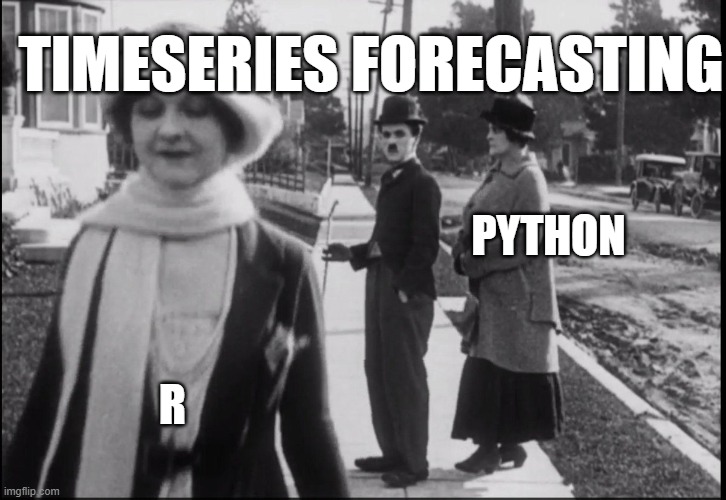Time Series Forecasting and Nixtla Ecosystem!
Python Milano meetup
Milan, May 18th 2023
👨👩👧 Me - Pietro Peterlongo
-
past: Math (Pisa, Trieste), Climate Science (Paris), Cryptography (Trento)
-
now (since 2015): Principal Data Scientist at ToolsGroup: Supply Chain Planning Software
-
Python: started early 2000s, serious around 2015, my first presentation in... May 2023 ;)
-
...also active in Open Source with Nim
Why Forecasting?
What is Time Series Forecasting?
| t | y |
|---|---|
| 0 | 5 |
| 1 | 35 |
| 2 | 15 |
| 3 | 23 |
| 4 | 25 |
| 5 | 30 |
| 6 | ? |
Given:
$$y_t$$ $$t=0, 1, \ldots, T$$
Provide:
$\hat{y}_{T + 1}$
(+ confidence)
Domains of applications
-
events planning (how many?)
-
weather forecasting (sun or rain?)
-
economics (growth next year?)
-
control theory (reactor will heat?)
-
finance (stock up or down?)
-
web analytics (how much traffic?)
-
energy (how much consumption?)
-
supply chain (how many sales?)
How to forecast
-
equations with $t$ (ODEs, PDEs, ...)
-
judgmental forecasts
-
statistical forecasting
-
classical (ETS, ARIMA, ...)
-
ml (random forest, LGBM, ...)
-
neural (NBEATS, DeepAR, ...)
-
ensemble forecasting
Dealing with Uncertainity

Supply Chain

A Crash Course
Methodology
- think about your why
- gather data (process, explore)
- baseline
- measure
- improve
- restart from step 4 or less
Baseline
- Historical average
- Naive (aka persistence in weather forecasting)
- Moving Average
- Seasonal Naive
- ..., existing forecast (benchmark)
Metrics
$$ \text{MAPE} = \frac{1}{N} \Sigma \frac{\left| e_t \right|}{d_t} $$
$$ \text{MAE} = \frac{1}{N} \Sigma \left| e_t \right| $$
$$ \text{RMSE} = \sqrt{\frac{1}{N} \Sigma e_t^2} $$

Cross Validation (aka Backtesting)


ETS (Error, Trend, Seasonal)

AutoETS performs automatic model selection
References
FPP: Forecasting Principles and Practices

by Rob J Hyndman and George Athanasopoulos
Monash University, Australia
3rd edition, May 2021
free! otexts.com/fpp3/
R-based
Other references
- Youtube (+ Kaggle) course by Konrad Banchewicz (Feb 2022): video 1, kaggle 0
- Time Series Analytics and Forecasting, Lectures by Lorenzo Nespoli (May 2023)
- Demand Forecasting con Serie Temporali gerarchiche, intervista Pythonista Ep10 (Nov 2021)
Python Libraries for Timeseries
The best Python implementations for my time series methods are available from Nixtla.
- statsmodels
- sktime
- skforecast
- Darts
- Prophet (from Facebook)
- GluonTS (from Amazon)
- Merlion (from Salesforce)
- ..., awesome-time-series


Nixtla Story
Hi! At nixtla, we have just launched our MVP: Open Source Forecasting Pipeline. We want to democratize access to state-of-the-art forecasting models. Feedback and comments are welcome! https://t.co/1y7ttPYNgy
— fede garza (they/them) (@fede_gr) October 15, 2021
I'm thrilled to announce that we're releasing the fastest #autoarima implementation for #Python today! 😍
— fede garza (they/them) (@fede_gr) February 22, 2022
It is a mirror implementation of @robjhyndman's #autoarima (R) and it is optimized using @numba_jit. It is 20x faster than pmdarima and @MetaAI's Prophet. 😎
🧵@nixtlainc
Forecast 1M time series in 30 minutes. @nixtlainc + @raydistributed + @numba_jit = 🤩 🚀 ⚡
— fede garza (they/them) (@fede_gr) May 3, 2022
Recently, we launched the fastest version of #AutoARIMA for #python. Now you can scale your computation horizontally for millions of time series, leveraging the power of @raydistributed pic.twitter.com/zkfBL0FYJ4
🎉Today at @nixtlainc, we are excited to release our new 👑HierarchicalForecast library. 🔥
— fede garza (they/them) (@fede_gr) July 26, 2022
You can simply reconcile forecasts for hierarchical problems using statistical approaches such as Bottom Up, Top Down, Middle Out, Minimum Trace, and ERM. #Python #Forecasting
🎉 We are thrilled to announce the release of the latest version of mlforecast a #Python library for Scalable #machinelearning 🤖 for #timeseries #forecasting
— nixtla (@nixtlainc) February 21, 2023
🚀 This version comes with exciting new features that are sure to make forecasting even more efficient and accurate
🧵 pic.twitter.com/UR7wM0DTUJ
Team

Why Nixtla?
- open source
- api
- performance
- vision
Risks: moving fast, iterating on business model
Nixtlaverse
import lightgbm as lgbm
from mlforecast import MLForecast
from window_ops.expanding import expanding_mean
from window_ops.rolling import rolling_mean
mlf = MLForecast(
models = [lgbm.LGBMRegressor()], # list of models
freq = 'MS', # frequency of time series: month start
differences=[12], # differences to apply to target
lags=[1, 12], # lags to use as feature
lag_transforms=( # lag transformation to apply to specific lags
1: [expanding_mean],
12: [(rolling_mean, 24)],
)
)
A declarative feature engineering pipeline!
mlf.fit(df)
forecast_df = mlf.predict(12, levels=[90])

Thank you for listening!
